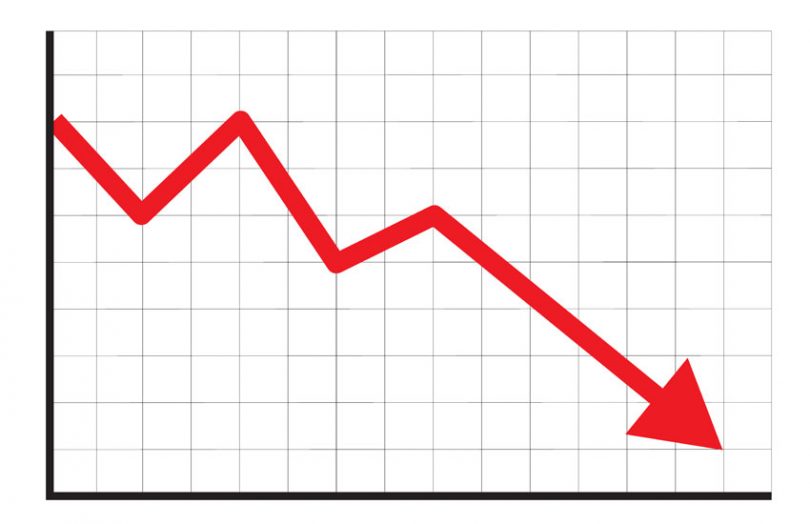Yesterday was a bad day for many, but especially those in the blockchain and cryptocurrency worlds. We’re a business rather than investor publication, so the focus here is on how to build a more resilient decentralized infrastructure.
But first off, let’s get the cryptocurrency bloodbath out of the way. At its low point yesterday, Bitcoin dropped 46% in a day compared to a 6% decline for gold (also at the low point) and the S&P’s loss of 9.5%.
Bitcoin has been pitched to hedge funds, high net worth individuals and retail users as an uncorrelated store of value. Both the correlation and value narratives were disproved yesterday. But to give a balanced perspective, there are signs that in the coming days and weeks, there could be a crisis of faith in the banking system. And that may attract newcomers to cryptocurrency even though it’s anything but a safe haven.
MakerDAO hints at future banking, trade finance disruption?
Turning to blockchain, the question is how the public blockchain infrastructure held up? The poster child for Decentralized Finance (DeFi) is the MakerDAO. It offers a (moderately) stable coin, and an alternative credit facility. It’s often characterized as a collateralized derivative contract.
Before you dismiss this as just a cryptocurrency, two important players in the supply chain finance sector are involved. Unicorn Tradeshift previously ran a pilot with MakerDAO. Mads Stolberg-Larsen, Fintech and Blockchain lead at Tradeshift Frontiers told Ledger Insights via email:
“Decentralised Finance is one of the most interesting social experiments on the planet. Just like Napster and MP3 technology defied the laws of gravity in the music industry back in the late 1990’s and early 2000’s, DeFi solutions on Ethereum defies the laws of gravity in financial services today. For example, you can take a loan out to yourself without needing a lender through MakerDAO.”
The founders of successful supply chain finance (SCF) firm, Taulia, created Centrifuge as a next-generation SCF platform. Initially, MakerDAO’s collateral deposits only involved Ethereum’s currency ETH. In the Centrifuge case, the collateral deposits are SME trade finance debts that have been tokenized on Ethereum. So credit is raised via the Ethereum platform.
A quick note on how MakerDAO works. Someone who wants to borrow money pledges collateral. Currently, most of the collateral is ETH rather than trade finance or other assets. By pledging the collateral, the person can borrow funds, usually up to two-thirds of the collateral, but less at the moment. And that borrowing is from people who buy the DAI stablecoin, which is worth roughly $1.
We spoke to Stephan Karpischek of insurance startup Etherisc which has worked with AON and others. Karpischek commented: “In a sense, MakerDAO is actually a risk transfer system. It’s a very specific risk, volatility risk, which is transferred from one person, the one who wants to hold DAI, to someone else who for example opens a Vault (formerly known as CDPs, collateral debt positions) or holds MKR. Etherisc’s vision could also be described as a generalization of that idea to make more kinds of risk transferable on-chain.”
Some have criticized the MakerDAO’s ability to keep the DAI stable at a $1 (rebuttal here) and suggested it should be regulated. But apart from insurance, the other aspects sound a lot like banking and debt markets. Although the lending is over-collateralized compared to banking’s fractional reserve model.
Central banks have concerns about issuing sovereign digital currencies, since they worry about the impact on commercial bank deposits. Moving away from the fractional reserve model in which banks lend out money is incredibly risky for financial stability. Like it or not, an alternative is already happening on a small scale. It could be ten years plus to make a real impact, but this is how disruption starts, unless it gets regulated away.
What went wrong with the MakerDAO?
Yesterday was a very bad day for the MakerDAO. The good news is the stablecoin did not drop below $1. But some borrowers who put up collateral had their entire collateral wiped out when they should have only lost some money as the ETH price plummeted. The total loss is to the tune of around $4.5 million.
There were three major related issues. Firstly, Ethereum’s scalability challenges were on display, as the network congestion meant transactions took too long to complete. Whether because of congestion or not, oracles that provide pricing data failed to update quickly enough. And thirdly, for a combination of reasons, a weakness in the system enabled someone to take advantage of the situation and take $4.5 million almost for free.
Clearly, a loss of collateral is the most critical issue. Ethereum transactions require a payment or ‘gas’. You pay more gas if you want a transaction processed more urgently. In an imploding marketplace with a congested network, if you want competition, all players making bids should ideally be paying the same high gas price.
Yesterday two things happened. Some of the ‘Keepers’ who are incentivized to keep the system running sat on the sidelines because there was a lack of liquidity. And blockchain certainly isn’t the only place that liquidity failures happen during a crisis.
But also most of the Keepers in MakerDAO automatically set low gas fees. When there’s no congestion, that’s not a problem. But one bot came along with a higher gas fee offering zero DAI (dollars) for ETH worth over $100, and won because there was no competition and the market is automated.
As a result, the platform has to mint new tokens to make up the shortfall. In other words, the loss will be socialized.
Another issue relates to price feeds provided via oracles. On Twitter, multiple people commented on the potential for oracles to be manipulated.
Another Philip Daian tweet stated: “So, an oracle can stop reporting. An oracle can choose *which* prices to sample on the continuous time series. An oracle can send transactions at lower-than-optimal gas prices during spikes and claim ‘whoops that one did not make it through'”.
The real problem is that Ethereum’s congestion reduced transparency, with the potential to mask bad behavior. In a blog post, MakerDAO said: “the specifics regarding the issue of the price feed delay itself are still under investigation.”
So lessons learned?
In a more scalable network, some of these issues are less likely to happen, and improving Ethereum’s scalability is being addressed, though slowly. But exploiting timing differences is nothing new, as demonstrated by ‘conventional’ high frequency trading platforms relocating their networks to gain fractional timing benefits.
But paying different gas prices or the prioritization of transactions in a crisis seems to be an area that may need addressing.
Plans are already afoot to alleviate the liquidity issue or the absence of Keepers in a crisis. In a Reddit post, another Etherisc co-founder, Renat Khasanshyn, outlined a strategy discussed by the community to create a pool of last resort liquidity or a Keeper Pool. Additionally, there’s a plan to make it really easy for people to become a Keeper. The ultimate aim is to prevent someone being able to monopolize the market, especially for $0.
From a bank or enterprise perspective, this might look horrifying. But so is the Fed injection of $1.5 trillion.
“A lot of DeFi services, including MakerDAO, use a really volatile underlying asset for collateral (ETH) and don’t have the luxury of centralized control in emergency situations. The limits to these solutions are therefore being tested,” commented Tradeshift’s Stolber-Larsen.
To dismiss MakerDAO might be foolhardy. For some who lost significant sums, it was devastating. But for those with an eye on the future, the lessons learned to enable resilience will be priceless.
Tradeshift’s Stolber-Larsen said: “Like the rest of the Coronavirus hit world, everyone in the DeFi space is getting a practical lesson in black swan risk management. Likely the DeFi system is going to prove it is ‘Antifragile’ and will come back even stronger from this stressful situation.”
The author is a nocoiner







